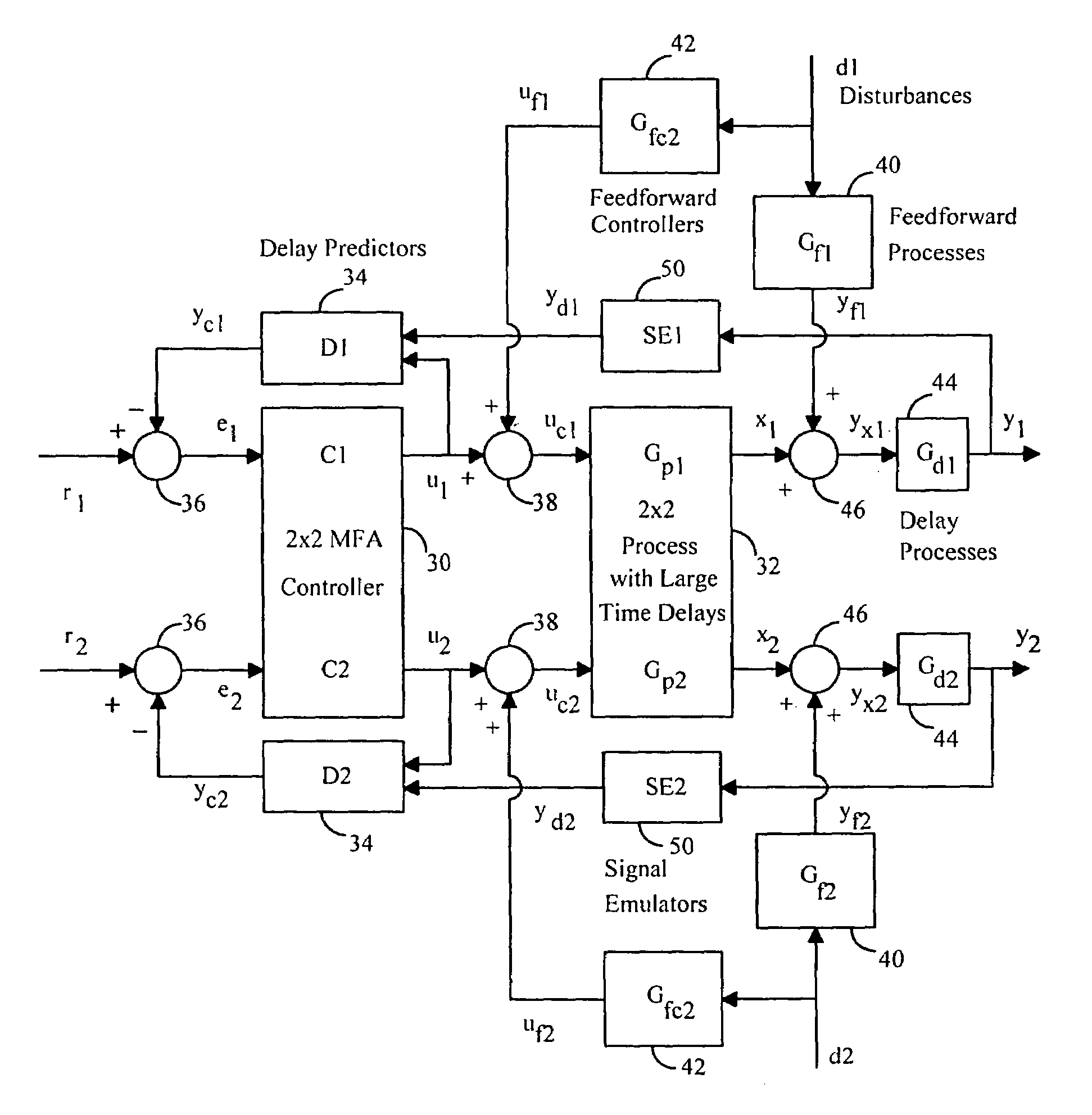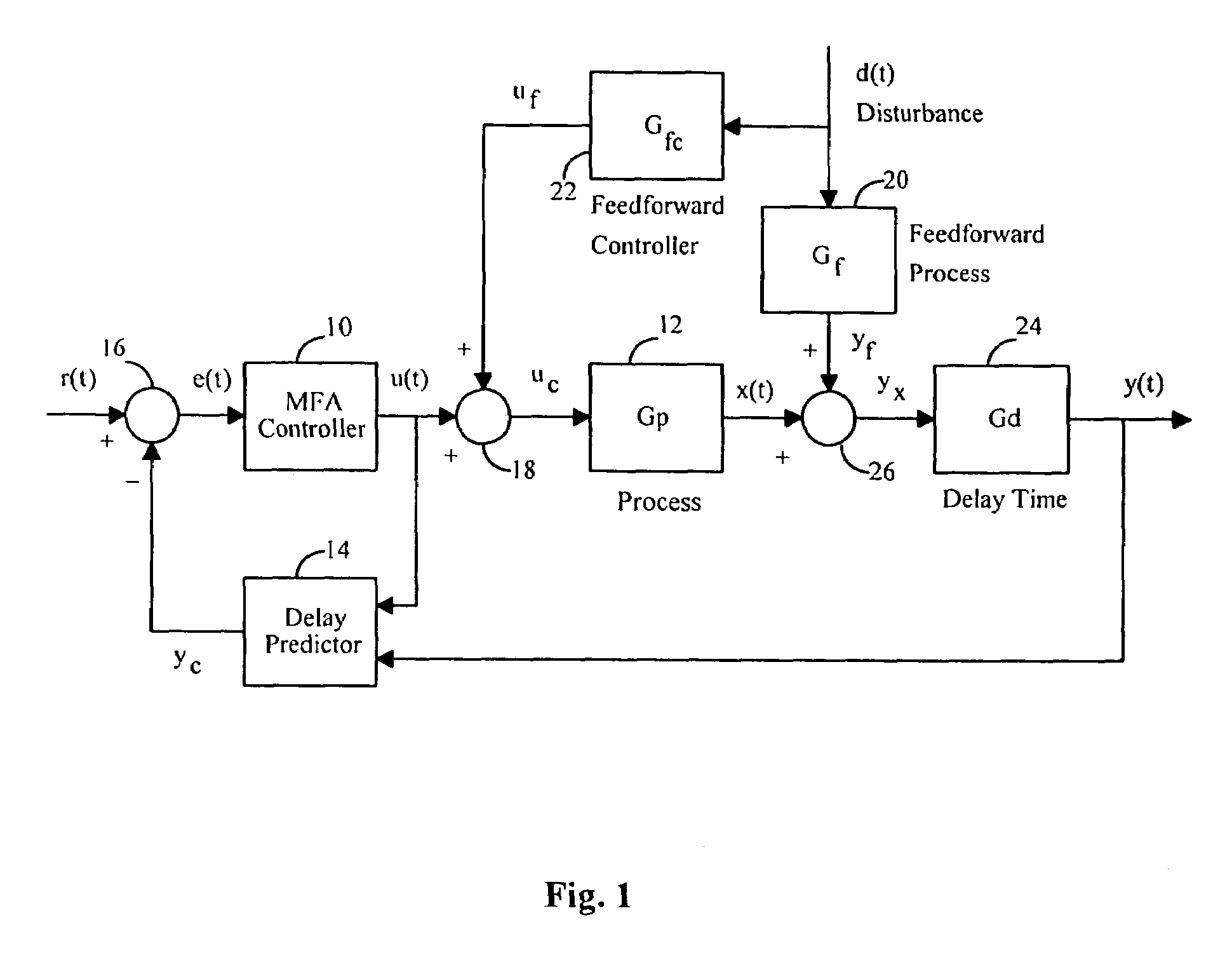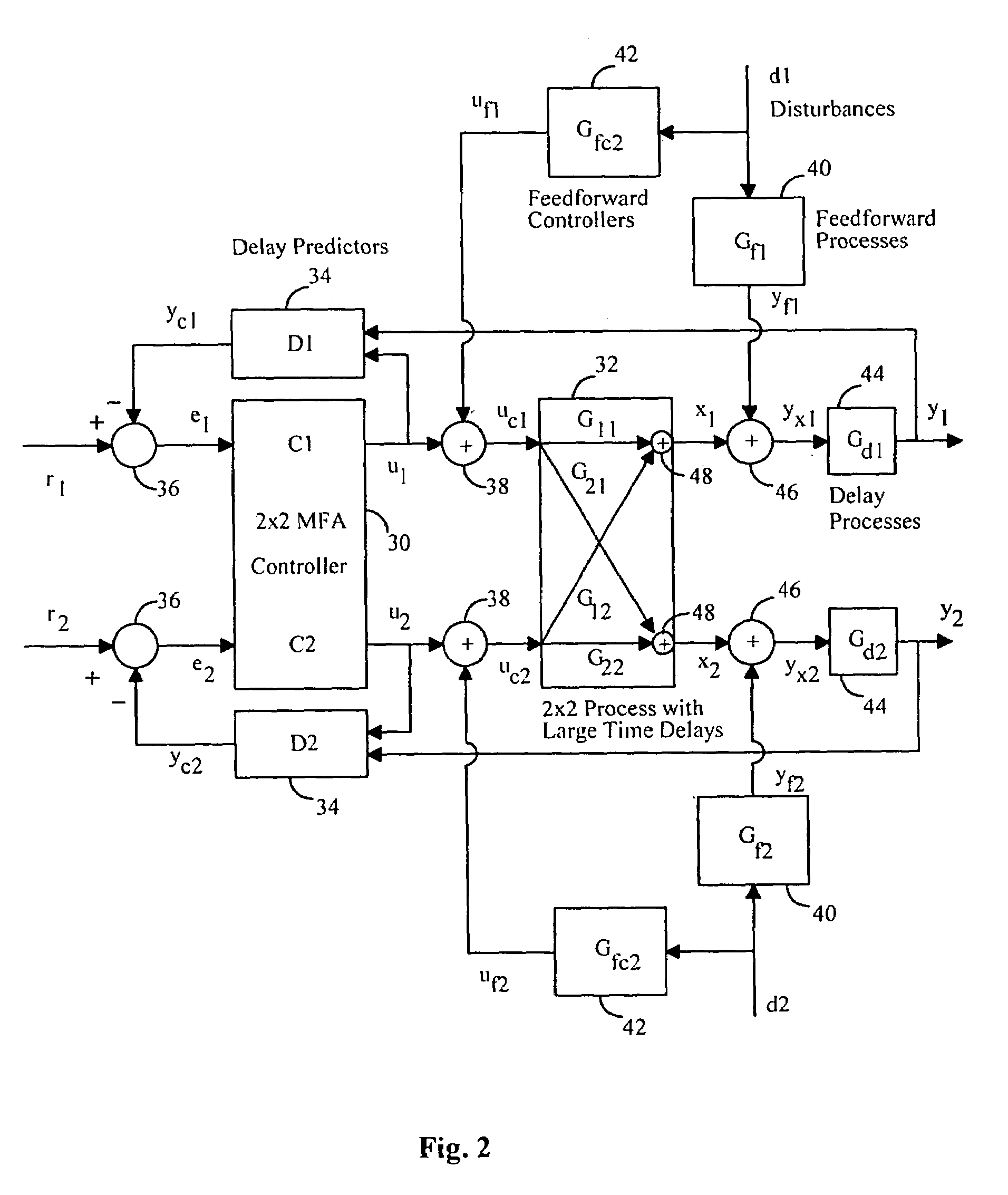Model-free adaptive control of quality variables
a model-free adaptive control and variable technology, applied in the direction of automatic control of ignition, electric controllers, instruments, etc., can solve the problems of lack of process capability, insufficient statistical quality control methods, and inability to tell how to eliminate or redu
- Summary
- Abstract
- Description
- Claims
- Application Information
AI Technical Summary
Benefits of technology
Problems solved by technology
Method used
Image
Examples
case 1
If the process has a large delay time, the MFA control system should be configured according to the following cases:[0056] τd is much bigger than τp and τf.
Solution 1.[0057]1. For the Anti-delay MFA controller, configure K, T, and Ip as described in the previous section. Estimate τd and let
τ=τd. (9)[0058]2. For the Feedforward MFA controller, ignore τp and τf by letting
τfc=0. (10)
Configure feed forward MFA controller gain based on the following Equation: Kfc=-KfKp,(11)
where Kfc is the MFA Feedforward controller gain, Kf is the estimated static gain of process Gf, and Kp is the estimated static gain of process Gp. Then estimate Tf and let
Tfc=Tf, (12)
case 2
where Tf is the feedforward time constant of feedforward process Gf.[0059] τd is approximately zero, τp is bigger than τf.
case 3
Solution 2: Since τd is 0, the disturbance signal from d(t) will show up quickly at y(t). Then the feedback controller will get this signal with almost no delay. Therefore, there is no need to include feedforward control in this case. The feedback Anti-delay controller can be used as usual.[0060] τd is approximately zero, τf is bigger than or equal to τp.
Solution 3. The feedforward MFA controller is required to compensate for the large delay time in Gf based on the following formula:
τfc=τf−τp, (13)
where τfc is the delay time of the feedforward MFA controller. That is, the feedforward control action of uf needs to be delayed by τfc in order to cancel out the feedforward disturbance of yf to the system.
B. MIMO Model-Free Adaptive Quality Variable Control
[0061]Without losing generality, FIG. 2 illustrates a multi-input-multi-output (MIMO) Model-Free Adaptive Quality Variable Control System, which includes a 2-input-2-output MFA Controller 30, a 2-input-2-output (2×2) process 32, two D...
PUM
 Login to View More
Login to View More Abstract
Description
Claims
Application Information
 Login to View More
Login to View More - R&D
- Intellectual Property
- Life Sciences
- Materials
- Tech Scout
- Unparalleled Data Quality
- Higher Quality Content
- 60% Fewer Hallucinations
Browse by: Latest US Patents, China's latest patents, Technical Efficacy Thesaurus, Application Domain, Technology Topic, Popular Technical Reports.
© 2025 PatSnap. All rights reserved.Legal|Privacy policy|Modern Slavery Act Transparency Statement|Sitemap|About US| Contact US: help@patsnap.com



